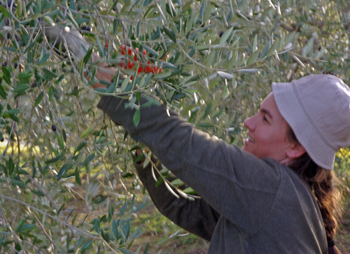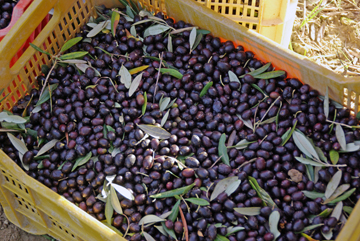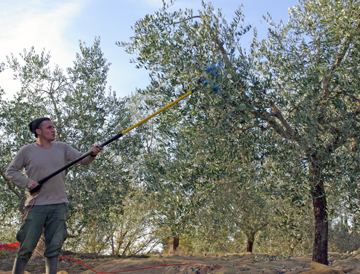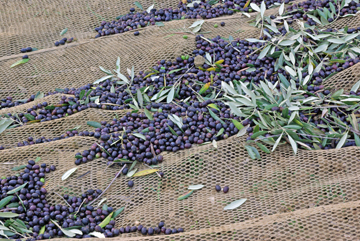
Olive Harvest We were in Tuscany when we first experienced the olive harvest. Teams of workers traveled from one grove to the next and spent hours harvesting the olives and then repeated the process the following day. Most wineries in Tuscany have olive groves. Usually they will send the harvested olives to a co-op that will process them into olive oil. The oil is then sent back to the winery. There are a few wineries that have their own olive oil facility and even fewer that use the Veronelli method to make single varietal olive oil.
The harvesters work down a row of trees.
.
|
An automatic rake is also used to harvest the olives from the out of reach areas of the trees. Large nets are placed under several olive trees on both sides of the trees. These nets catch the olives as they are "raked" from the tree. The prongs of this mechanical rake move back and forth. The harvester moves the rake up the branches of the tree. This movement causes the olives and some leaves to fall to the net on the ground.
We observed one of the work crew picking up many of the leaves from the net. After the net has quite a few olives on it, the harvested olives are placed in bins (pictured above).
A ground crew drags the net down the row ahead of the harvesters.
The harvested olives will be taken to a mill for processing. If a single-varietal olive oil is made following the Veronelli method, the olives must arrive at the mill within four hours. |
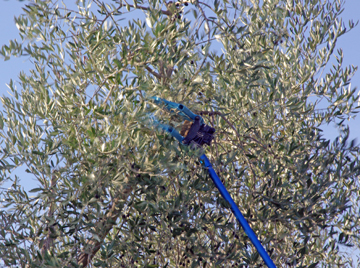
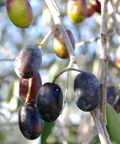 When the olives reach about 40 percent veraison, they are ready for harvesting. In the Chianti region of Tuscany, Italy this may occur at the end of October and during November. Olives are harvested by the same procedures whether they will be used in a single-varietal olive oil or a blend. They can be harvested by hand using a small handheld rake and a larger rake to reach the olives out of reach.
When the olives reach about 40 percent veraison, they are ready for harvesting. In the Chianti region of Tuscany, Italy this may occur at the end of October and during November. Olives are harvested by the same procedures whether they will be used in a single-varietal olive oil or a blend. They can be harvested by hand using a small handheld rake and a larger rake to reach the olives out of reach. 